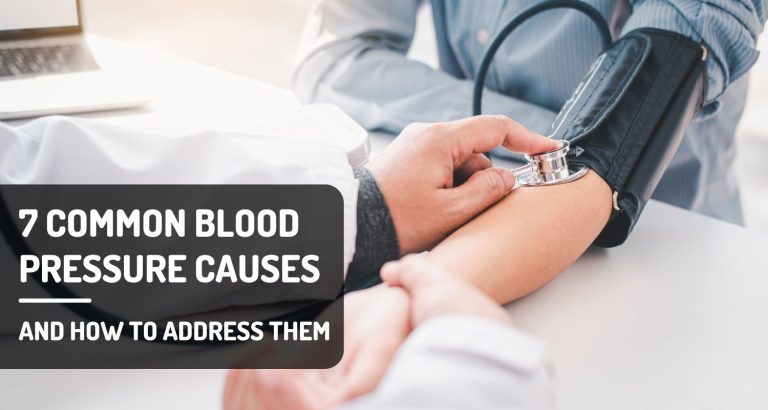10 Astonishing High Intensity Interval Training (HIIT) Benefits Revealed

Are you tired of the same old workout routines that seem to yield minimal results? It’s time to shake things up and embrace the fitness revolution known as High-Intensity Interval Training (HIIT).
In this blog post, we’ll dive deep into the world of benefits of high intensity interval training that this dynamic exercise regimen has to offer. Get ready to transform your fitness journey with HIIT – it’s not just a workout; it’s a lifestyle!
Before we jump into the HIIT training benefits, let’s get acquainted with what HIIT is:
HIIT 101
HIIT is a fitness strategy that alternates between short bursts of intense exercise and brief periods of rest or low-intensity recovery. It’s designed to push your body to its limits in a shorter amount of time compared to traditional workouts.
When it comes to weight loss, high intensity interval training for weight loss reigns supreme. Its ability to elevate your heart rate to near-maximum levels during those intense intervals maximizes calorie burn, and the post-exercise calorie expenditure continues long after your workout, making it a potent weapon against excess pounds.
Studies show the benefits of high intensity interval training and that it can lead to significant reductions in body fat, particularly abdominal fat, which is notoriously stubborn. So, if shedding those extra pounds is your goal, HIIT should be your go-to workout choice. [1]
Now, let’s uncover why HIIT is making waves in the fitness world:
1. Turbocharged Calorie Burner
Treadmill or HIIT? That’s the question many fitness enthusiasts ponder. Well, the science behind it is clear – HIIT torches more calories per minute than steady-state cardio workouts. A 20-minute HIIT training for weight loss can burn as many calories as 45 minutes of jogging!
This calorie-burning efficiency is due to the intense bursts of effort during HIIT, which elevate your heart rate and engage multiple muscle groups simultaneously.
Moreover, HIIT creates an “afterburn effect” where your body continues to burn calories even after your workout, thanks to the increased metabolism and oxygen consumption. So, if you’re aiming to maximize calorie burn and time efficiency, HIIT is the way to go.
2. Time-Efficient
Do you have a busy schedule that makes it challenging to squeeze in a long gym session? HIIT is your time-saving solution, and recent research supports its efficiency and promotes the benefits of high intensity interval training. According to a study published in the International Journal of Environmental
Research and Public Health (Chu et al., 2021), HIIT sessions typically last between 15 to 30 minutes, making it perfect for those on the go. The study found that HIIT not only saves time but also offers substantial benefits of HIIT for inactive individuals, including improved affective responses during exercise.
So, if you’re looking for a quick and effective workout, HIIT is a scientifically backed choice that fits seamlessly into your busy lifestyle. [2]
3. Fat-Blasting Beast
For those striving for a leaner midsection, an HIIT training workout plan may be your golden ticket. Research suggests that HIIT is particularly effective at reducing abdominal fat, which is associated with various health risks.
A study published in Diabetes & Metabolism by Maillard et al. (2016) specifically examined the impact of high-intensity interval training on abdominal fat mass in postmenopausal women with type 2 diabetes.
The study’s findings revealed that HIIT can lead to a significant reduction in abdominal fat, which is not only aesthetically desirable but also crucial for improving overall health.
This evidence underscores the relevance of HIIT as a powerful tool in the pursuit of a trimmer waistline and better health. [3]. High-intensity interval training reduces abdominal fat mass in postmenopausal women with type 2 diabetes.
4. Heart Health Champion
HIIT is like a love letter to your heart, backed by scientific evidence confirming the benefits of high intensity interval training. Research, such as the study conducted by Crozier et al. (2018) in Neurorehabilitation and Neural Repair, emphasizes HIIT’s role in improving cardiovascular health.
The study found that HIIT effectively increases heart rate during intense intervals, while the subsequent recovery periods contribute to enhanced cardiovascular adaptation and efficiency. This cardiovascular boost not only strengthens your heart but also promotes overall health and well-being.[4]
5. Metabolic Marvel
One of the most exciting HIIT benefits is its ability to rev up your metabolism. After a HIIT training workout plan, your body continues to burn calories at an elevated rate, even when you’re resting.
Think of it as your body’s “afterburner” mode. For instance, after a 20-minute HIIT workout, your metabolism can remain heightened for several hours, leading to additional calorie burn while you relax on the couch or even sleep.
6. Muscle Magic
HIIT running for weight loss isn’t just about burning fat; it’s also about sculpting a toned physique. It promotes the growth of lean muscle mass, which not only looks great but also boosts your metabolism.
7. Minimal Equipment, Maximum Results
Don’t have access to fancy gym equipment? HIIT can be done anywhere, anytime, with minimal or no equipment at all. This makes it a cost-effective and accessible fitness option for all and adds to the list of the benefits of high intensity interval training.
8. Mental Boost
HIIT doesn’t just benefit your body; it’s a brain booster too. According to a study by Saanijoki et al. (2018), HIIT triggers the release of opioids, which are natural mood enhancers.
This endorphin release during HIIT can improve mood, reduce stress, and enhance cognitive function. So, not only does HIIT sculpt your physique, but it also gives your brain a feel-good boost, making it a holistic fitness choice.
9. Suitable for All Fitness Levels
Regardless of your fitness level, HIIT can be adapted to suit your needs. Beginners can start with modified routines, gradually increasing intensity as they progress. It is one of the most important benefits of high intensity interval training.
10. It’s Fun and Exciting
Traditional workouts can sometimes feel monotonous. HIIT, on the other hand, is dynamic, engaging, and keeps you on your toes. The variety of exercises and the challenge of pushing your limits make it an enjoyable fitness experience.
Conclusion
High-Intensity Interval Training (HIIT) is not just another fitness trend; it’s a scientifically proven powerhouse that offers a plethora of benefits. From rapid calorie burning to heart health, HIIT has the potential to transform your body and mind.
So, why wait? Dive into the world of HIIT and unlock your fitness potential. Remember, it’s not about the duration of your workout but the intensity that counts. Start slow, stay consistent, and watch the benefits of high intensity interval training as they propel you toward your fitness goals with unparalleled efficiency.
References
- Shehata, A., & Mahmoud, I. (2018). EFFECT OF HIGH INTENSITY INTERVAL TRAINING (HIIT) ONWEIGHT, BODY MASS INDEX AND BODY FAT PERCENTAGE FOR ADULTS. Ovidius University Annals, Series Physical Education and Sport/Science, Movement and Health, 18(2), 125+.
- Chu, I. H., Wu, P. T., Wu, W. L., et al. (2021). Affective Responses during High-Intensity Interval Exercise Compared with Moderate-Intensity Continuous Exercise in Inactive Women. International Journal of Environmental Research and Public Health, 18(10), 5393.
- Maillard, F., Rousset, S., Pereira, B., Traore, A., de Pradel Del Amaze, P., Boirie, Y., Duclos, M., & Boisseau, N. (2016). High-intensity interval training reduces abdominal fat mass in postmenopausal women with type 2 diabetes. Diabetes & Metabolism, 42(6), 433-441.
- Crozier, J., Roig, M., Eng, J. J., et al. (2018). High-Intensity Interval Training After Stroke: An Opportunity to Promote Functional Recovery, Cardiovascular Health, and Neuroplasticity. Neurorehabilitation and Neural Repair, 32(6-7), 543-556. doi:10.1177/1545968318766663.






